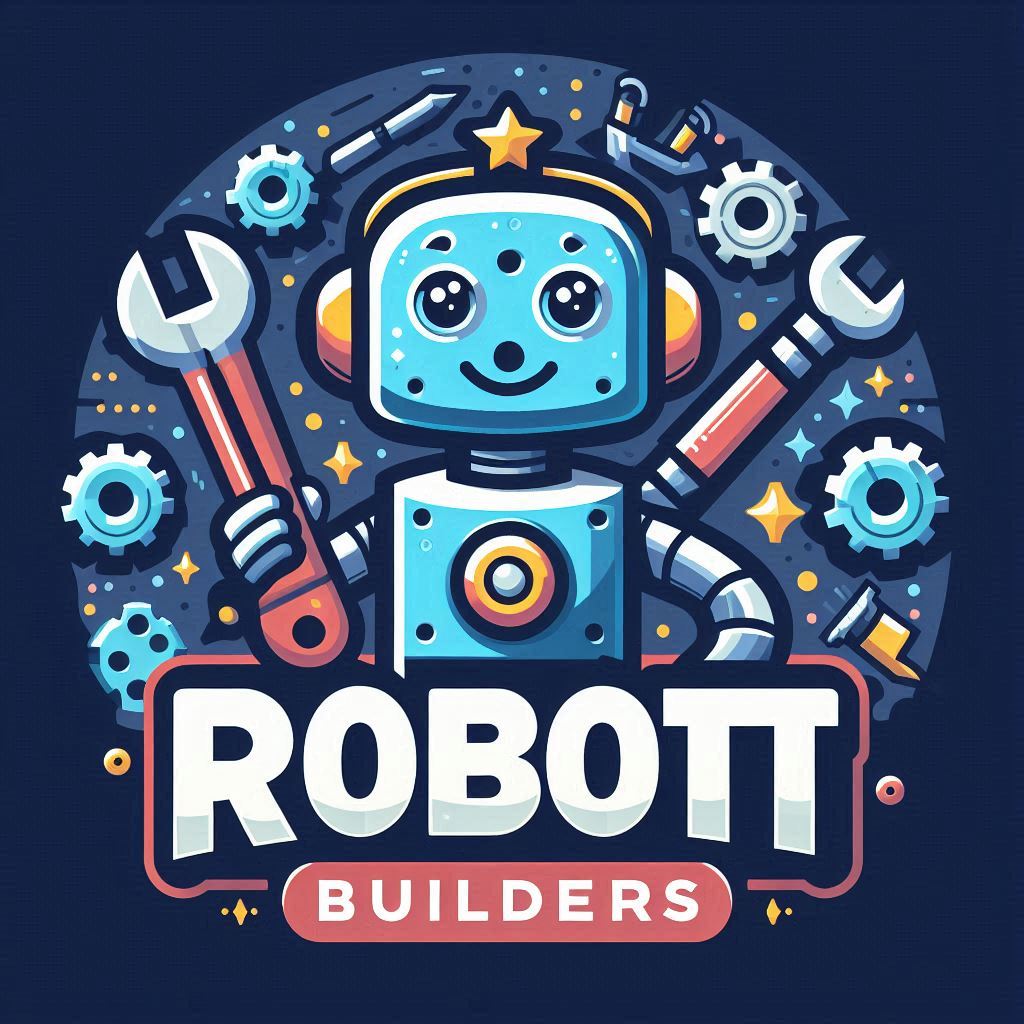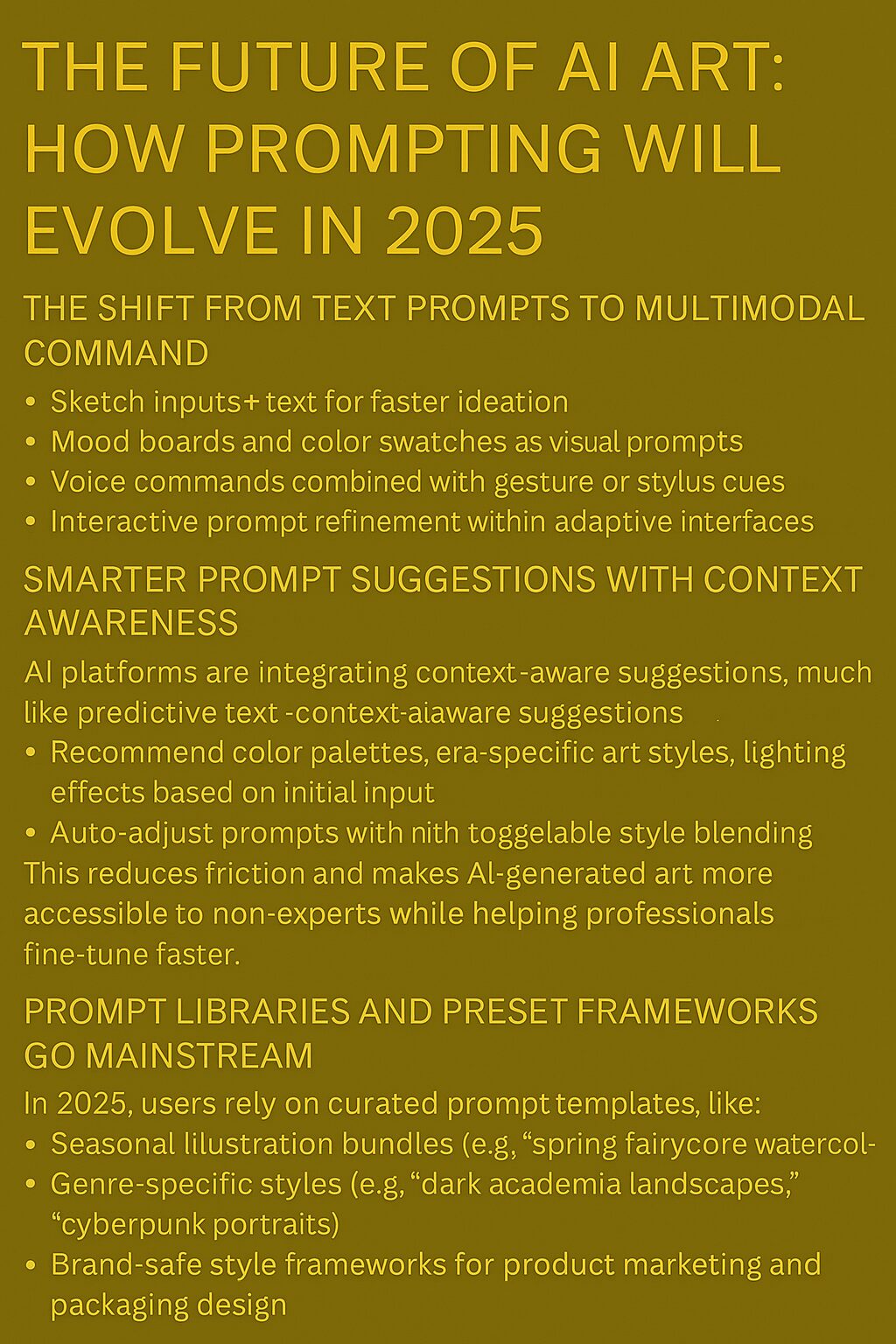Introduction
AI-generated art is no longer a novelty—it’s a powerful tool for creatives, developers, and entrepreneurs alike. As we enter 2025, the art of prompting is evolving rapidly, with new models, smarter interfaces, and intuitive workflows transforming how creators generate and refine digital art. This article explores how AI art prompting will evolve in 2025, and what that means for the future of visual storytelling, design, and user experience.
🎨 The Shift from Text Prompts to Multimodal Command
In 2025, prompting is moving beyond plain text. Artists are now using:
- Sketch inputs + text for faster ideation
- Mood boards and color swatches as visual prompts
- Voice commands combined with gesture or stylus cues
- Interactive prompt refinement within adaptive interfaces
These multimodal inputs offer richer control over style, structure, and storytelling, reducing the need for highly technical prompt engineering.
✍️ Smarter Prompt Suggestions with Context Awareness
AI platforms are integrating context-aware suggestions, much like predictive text:
- Recommend color palettes, era-specific art styles, or lighting effects based on initial input
- Auto-adjust prompts to reflect commercial use, print settings, or NFT formatting
- Provide real-time previews with toggleable style blending
This reduces friction and makes AI-generated art more accessible to non-experts while helping professionals fine-tune faster.
📚 Prompt Libraries and Preset Frameworks Go Mainstream
In 2025, users rely on curated prompt templates, like:
- Seasonal illustration bundles (e.g., “spring fairycore watercolor”)
- Genre-specific styles (e.g., “dark academia landscapes,” “cyberpunk portraits”)
- Brand-safe style frameworks for product marketing and packaging design
These libraries boost consistency and cut creative downtime, especially for agencies and creators with tight turnarounds.
🤖 Personalized AI Prompt Engines
Advanced tools now tailor prompt behavior based on:
- User style history and visual preferences
- Cultural or geographic aesthetic leanings
- Commercial intent (print, animation, web)
In 2025, prompting engines learn the artist’s language, offering adaptive phrasing, automatic layering of style depth, and stronger alignment with each user’s brand.
📈 SEO Tips for Prompting Content in 2025
To help your AI-generated artwork stand out in search results and portfolios:
✅ Use Title Phrases Like
- “2025 Trends in AI Prompting for Visual Art & Design”
- “Future of Prompt Engineering in Generative Art Platforms”
✅ Integrate Long-Tail Keywords
- “AI art prompting with image and text fusion 2025”
- “Multimodal prompt workflow for concept art creation”
✅ Alt Text That Reflects Intent
- “AI-generated surreal cityscape based on hybrid text-and-image prompt with neon color scheme”
✅ Tags for Trend Visibility
- #FutureOfPrompting #AIArt2025 #MultimodalPrompts #PromptEngineeringEvolution
🔮 Final Thoughts
In 2025, prompting is no longer just “typing a description”—it’s a layered, intuitive dialogue between artist and algorithm. The evolution of AI art prompting empowers users to direct visual imagination with greater precision and play. From cinematic world-building to minimalist product mockups, the future is not only visual—but infinitely promptable.

